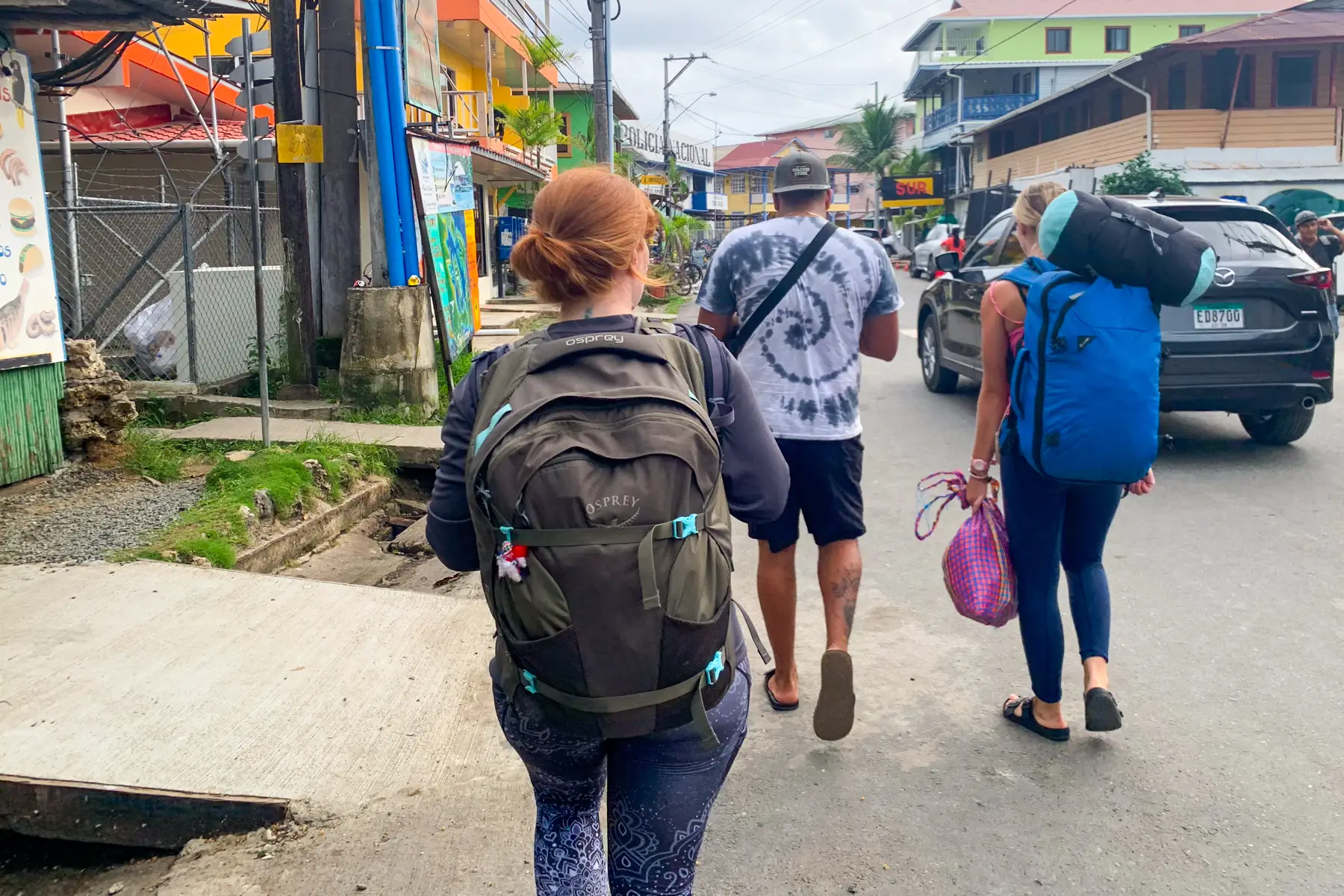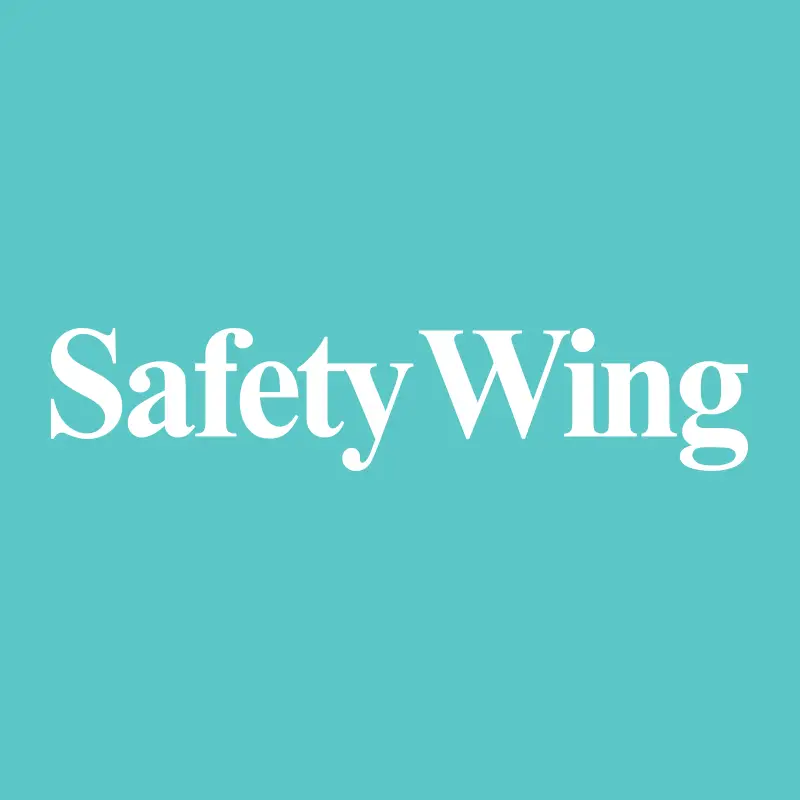Backpacking in Panama is often overlooked by shoestring travellers in favour of other Central American countries such as Guatemala and Costa Rica. Despite this, there is plenty to suit travellers of all stripes, no matter whether you’re craving Caribbean sun or epic hikes in the mountains.
Panama is home to a burgeoning backpacking scene and more budget travellers than ever are exploring the country. If you want to join them, listen up mi amigo! This guide will tell you everything you need to know about backpacking in Panama, from the best time to visit, getting around and the must-see destinations.
Read more: (opens in new tab)
Backpacking Panama – Travel Guide
This post contains affiliate links. If you use them, I will receive a small commission at no extra cost to you.
Best Time to Travel to Panama
Panama is a tropical country so it is best to visit during the dry season. This falls from mid-December to mid-April, however, showers can and do happen at any time of the year so travellers should prepare accordingly. Despite cooler temperatures, the dry season can be windy and cloudy.
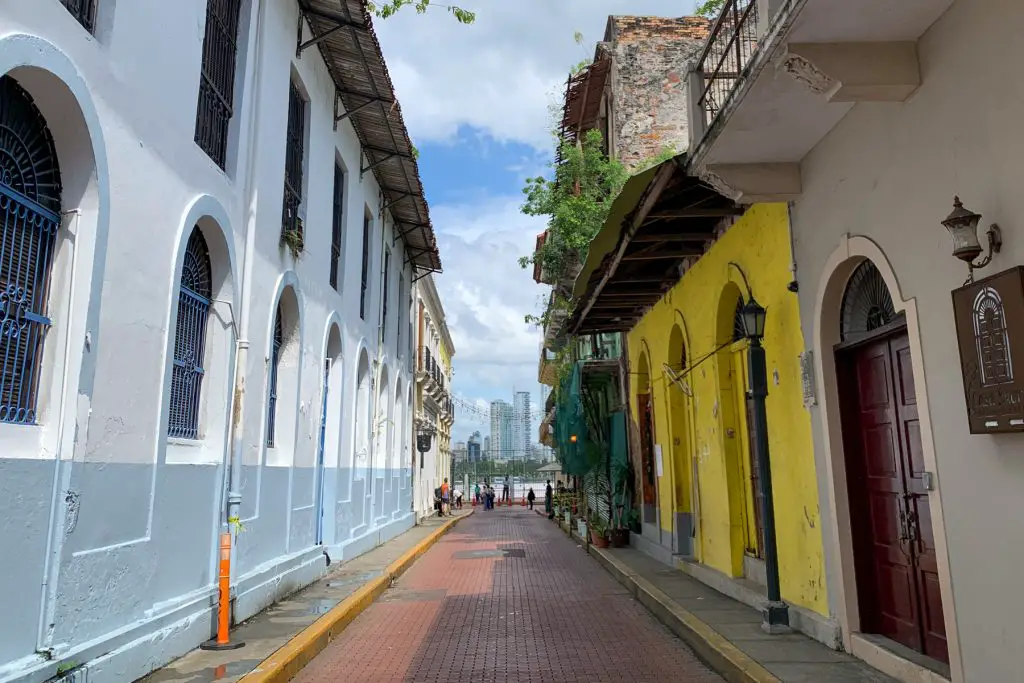
While the rainy season is the least desirable time to visit Panama, it does come with advantages. There is less competition for accommodation during the off-season and prices are lower.
If you’re looking to catch some waves during your time in Panama, you should consider visiting during the rainy season – this is when the swells are at their best. If wildlife spotting is on your list, a July to October visit sees the migration of humpback whales to the pacific ocean.
And, in case you’re wondering what to pack for your visit to Panama, I’ve got you covered. Check out my suggested Panama packing list here.

Is Panama Safe?
Panama City is generally a safe destination, however, much like elsewhere in Latin America, travellers are always encouraged to have their wits about them and take the standard safety precautions.
Pickpocketing is common in bus stations and shopping malls though violent crime tends to be uncommon. It is recommended that travellers avoid the city of Colón and exercise caution in Panama City. While Casco Viejo is generally a safe area, backpackers should be careful to avoid wandering into the El Chorillo neighbourhood where shootings happen frequently.
If you’re tackling some of Panama’s best hikes, make sure that you tell someone where you are going and download an offline map. Back in 2014, two Dutch tourists died while hiking the El Pianista in Boquete. Always stick to the trail.

It is always good to have an offline copy of your trail map. After all, phone signal comes and goes, especially in more remote areas! To make sure that I don’t get caught out, I use AllTrails Pro. It allows me to download trail maps direct to my phone and also tracks my journey, compiling my stats at the end. I also love sharing my adventures with the AllTrails community! Try a 7-day free trial of AllTrails Pro here.
Avoid using ATMs on the street (instead head inside a shopping mall if possible) and avoid carrying large amounts of cash. If using taxis, make sure you check that they are registered, however, Uber is generally a safer option.
Where to Visit in Panama
There are countless great spots in Panama for backpackers to visit. I’ve listed a few of them below so you can choose your favourites and establish a backpacking route around the country. Check out this page for suggested Panama itineraries!
Panama City
The capital of the isthmus and a fascinating melting pot of old versus new, Panama City is somewhere that should not be missed. It is one of the cheapest places to fly into in the whole of Latin America so there is a high chance that your journey will begin here.
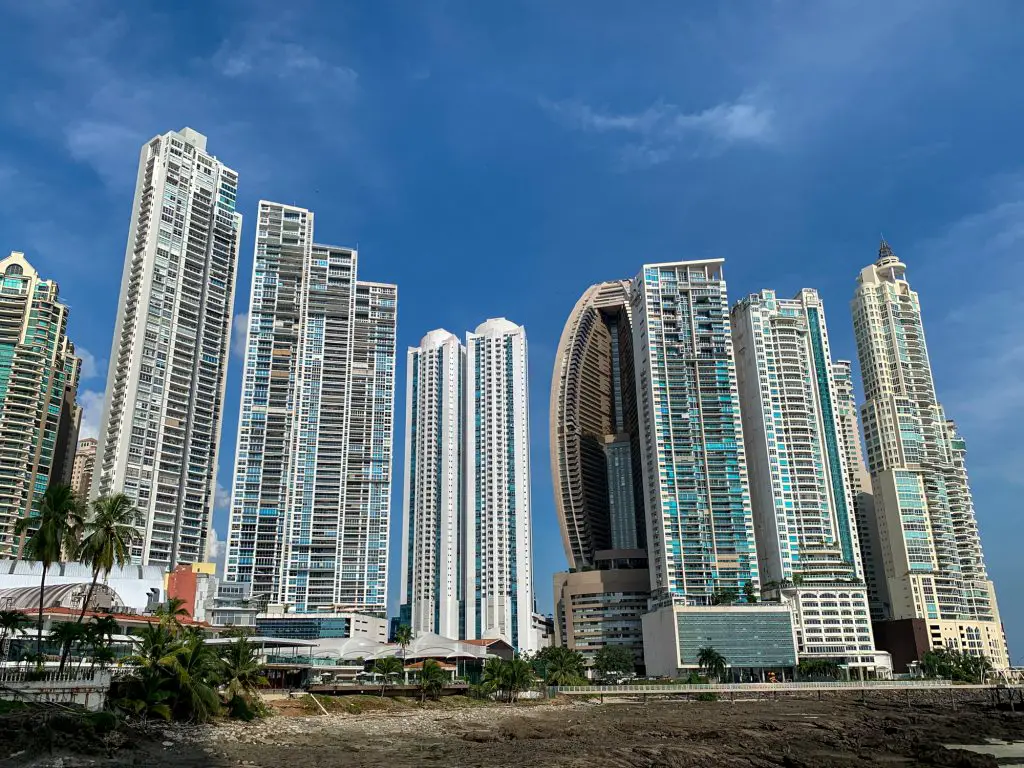
With all of the glitzy skyscrapers, you’d be forgiven for thinking you need a big budget to explore the capital but that is not the case! There are plenty of free and cheap things to do in Panama City, including some of the must-see attractions like the Panama Canal!
Gastronomy enthusiasts will relish the chance to sample some of Panama’s top dishes and there are also a number of nice walks with a variety of backdrops.
If you’re hoping to spot some of Panama’s most exciting animals, don’t miss Ancon Hill and the nearby Soberania National Park. They both offer incredible opportunities to see exotic flora and fauna.
Taboga Island
One of the best day trips from Panama City, a visit to Taboga Island is well worth the effort. With golden sands, sweeping vistas and friendly locals, Taboga offers Panama’s famous chilled coastal lifestyle, just a stone’s throw from the hustle of the capital.
Make sure to embark on one of the walking tours with a local to learn all about the swashbuckling past of the island and carve out time to hike Cerro de la Cruz – the views are epic.
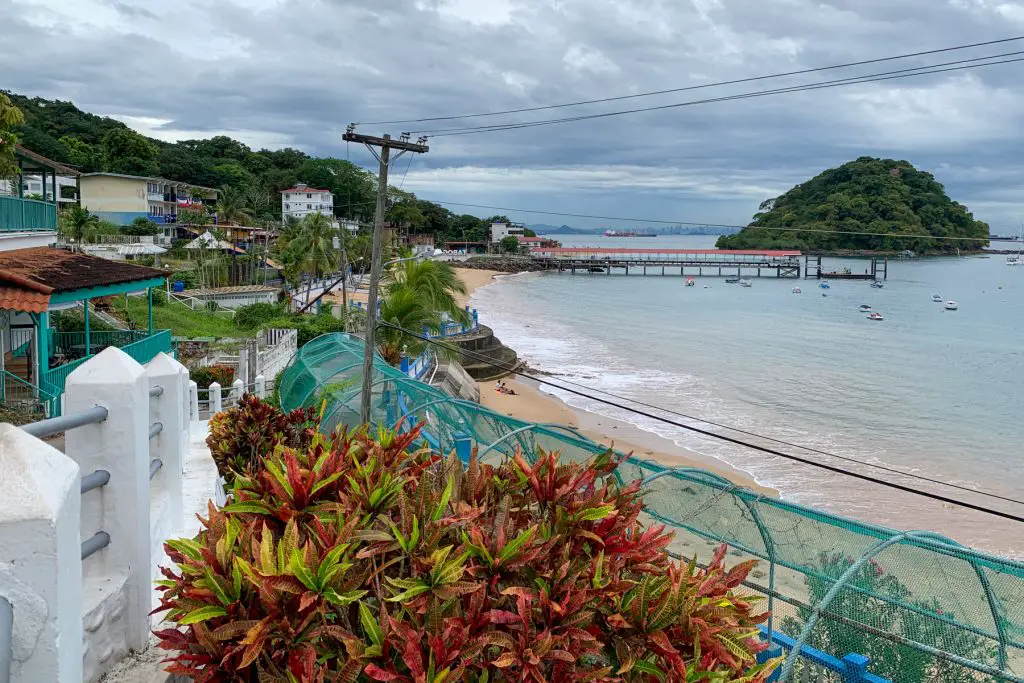
Pearl Islands
Consisting of over 200 islands and islets, the beautiful Pearl Islands archipelago is a must for beach lovers. Secluded sands are the name of the game here and there is also incredible scuba diving just off the coast. Wildlife enthusiasts will delight in the potential for seeing marine life, including humpback whales.
While most of the islands are uninhabited, there are a couple which are well set up for tourists. The most notable of these is Isla Contadora where you will find a range of accommodation options, however, it is worth noting that the Pearl Islands are expensive when compared to other destinations in Panama. If you’re a backpacker, you’ll need to budget accordingly!
El Valle de Anton
El Valle de Anton, often shortened to El Valle, is a great destination for hikers. Home to countless beautiful trails through the humid cloud forest, it is still somewhat of a lesser-visited spot. Over recent years and as the backpacker scene has grown, it has become somewhat of a hippie magnet.

If your visit coincides with a Sunday, don’t miss the artisanal market filled with handicrafts made by the local Ngäbe-Buglé community.
Santa Catalina
Beach bums look no further, Santa Catalina is the place you’ve been searching for! The heart of surfing culture in Panama, there are breaks for surfers of all abilities. Santa Catalina is growing in popularity but still mainly attracts surfers and free-thinkers – lots of yoga retreats take place here too.
If surfing isn’t your thing but you still want to clock onto beach time, make sure you check out the nearby Coiba National Marine Park. It’s located off the coast and is one of the best destinations for diving across the country!
Boquete
Nestled in the Chiriqui Highlands, Boquete is a mountain paradise for hiking and nature enthusiasts. The town and the surrounding area are chockablock with trails, from the famous Volcan Baru ascent to the Lost Waterfalls trail and the Pipeline hike.
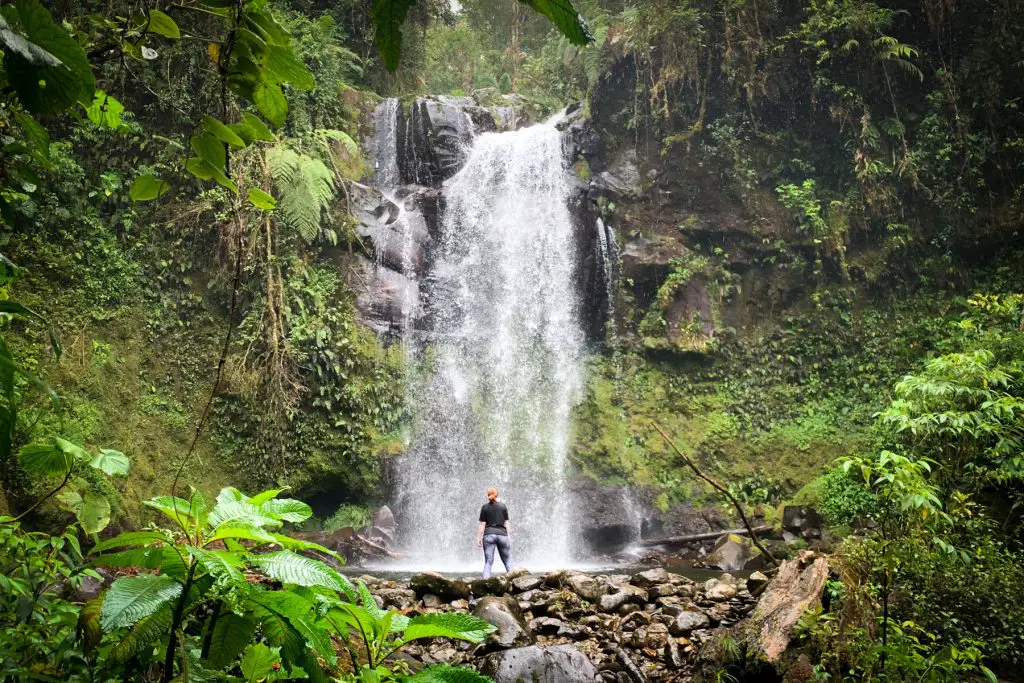
Make the most of the cool climate by exploring all of the fun things that Boquete has to offer, from visiting a coffee farm to taking on a zip line through the cloud forest.
If you’re continuing your travels up Central America, Boquete is one of the most common gateways to Costa Rica. Arrange a transfer via your hostel in town.
Also read: Top Hotels in Boquete, Panama.
Playa Venao
Perched on the Pacific coast you’ll find the relatively underdeveloped hippie hotspot of Playa Venao. It’s known for its unusual black sand beaches and gnarly surf breaks. More backpackers have come to this area since the popular Latin American hostel chain Selina pitched up here but it still sees fewer tourists than it deserves. Get there before capitalism ruins it!
Bocas del Toro
Bocas del Toro is the epicentre of backpacking in Panama. Every year, hoards of backpackers flood to the Bocas archipelago ready to experience beaches, booze and chill vibes. While the epic Filthy Fridays bar crawl will attract the partiers, there are plenty more things to do in Bocas!

Surfers will love the breaks at Bluff Beach and those looking for a more relaxing outing won’t want to miss Starfish Beach, easily accessible from Bocas town.
For those exploring Bocas from Isla Bastimentos, don’t miss Red Frog Beach and the tiny poison strawberry dart frogs that it’s named after.
San Blas Islands
When you think of Caribbean islands, it is probably the San Blas that you are holding in mind. Tiny spits of sand with a spattering of palm trees make these islands postcard-perfect and no trip to Panama is complete without a visit.
Getting to the San Blas Islands can be challenging and without doubt, the easiest way to visit is with a tour. To get the most out of a visit here, I recommend travelling from Panama to Colombia and island hopping on the way. This means you’ll have far more time on the islands than you can get from an overnight trip!

Darien Province
The Darien Province is one of the most alluring and mysterious parts of Panama. It is best known for being home to arguably the most dangerous part of the world; the Darien Gap.
Spanning 66 miles of remote jungle, this border zone between Central and South America is ruled by narco-traffickers. While a visit here to the gap is strongly advised against, intrepid travellers can head into the wider Darien region alongside an experienced guide.
Bear in mind that trips here are very expensive and the conditions very basic. Despite the challenging nature of a visit to the Darien, there are some really exciting wildlife spotting opportunities including the chance to see harpy eagles – the national animal of Panama.
Panama Backpacking Route – 1 Month
The following Panama backpacking route will allow you to experience the country’s most popular destinations, plus a few more off-the-beaten-track spots. The duration of stay is just a suggestion and can be tweaked to better suit your interests.
Bear in mind that to avoid returning to Panama City in between every destination, you will sometimes need to make the most of tourist shuttles. For example, getting from Playa Venao to Santa Catalina on public transport would involve a return trip to the capital. To avoid this, you can either split the cost of a taxi with other backpackers or book onto a tourist shuttle which will take you directly. This can be expensive but this is sometimes the most cost-effective way of doing things.
- Panama City – 2 nights
- Taboga Island – 1 night
- Panama City – 1 night
- Pearl Islands – 2 nights
- Panama City – 1 night
- San Blas – 2 nights
- Panama City – 1 night
- El Valle – 4 nights
- Playa Venao – 3 nights
- Santa Catalina – 3 nights
- Boquete – 5 nights
- Bocas del Toro – 6 nights
Getting Around Panama
Panama is a little late to the backpacking scene so the infrastructure isn’t as developed as in some other Latin American countries. While buses are by far the best way for backpackers to get around, there aren’t always reliable transport links between popular tourist destinations.
Therefore, travellers will often have to travel from Panama City and return to the capital to catch onward travel to their next destination. If you are using the Aldbrook bus station in Panama, make sure that you have purchased a public transport card. You will need this when using the metro around Panama City or catching a bus from Aldbrook.

Despite some of the tourist areas not being connected by public transport, in popular backpacker hotspots, it may be possible to arrange a transfer via your hostel or local tour company. These transfers come in the form of minibuses and connect popular destinations together.
Bear in mind that transfers are not cheap and sometimes they will be more expensive than returning to Panama City on public transport and heading to your new destination by bus from there.
Domestic flights are an option but as Panama is a small country (and flights are terrible for the environment), I recommend taking overland transport whenever possible. Not to mention that flights are not usually budget backpacker friendly!
Also read:

How Much Does it Cost to Backpack in Panama?
By Latin American standards, Panama is a fairly expensive country to backpack. This is because the official currencies are the US dollar alongside the Balboa (equivalent in value). A suggested backpacker budget is around $50-80USD per day. While you can spend less than this in some destinations if you are very frugal, lesser-visited places will drive your overall costs up.
As Panama is relatively new on the backpacking scene, hostels are prevalent in popular destinations but less common in more off-the-beaten-track spots. You’ll find both budget-friendly digs and more popular flashpacker options in places like Panama City and Bocas del Toro but next to nothing for budget travellers in the Pearl Islands.
Expect a night in a hostel shared dorm to cost between $10-30USD depending on the location and popularity of the hostel. In hostels where there are daily events such as yoga or salsa classes, you will likely pay more.

Private rooms usually provide better value for money for travelling couples and start at around $35USD per night but can get a lot more expensive than this! For a nicer hotel or private room in a good quality hostel, you’re more likely to spend upwards of $60USD. Airbnb can provide a good alternative to hotels in Panama City.
Food and drink in Panama varies in price but a good piece of advice is to stick to the local fare. Items with a big carbon footprint tend to cost more due to import and transport costs. It is far more economical to eat the local food.
Canteen-style eateries provide a great way to eat on the cheap and breakfast deals can be a budget-friendly way to fuel up for the day. Many hostels in Panama will provide a shared kitchen for guests to use which is another way to keep costs down. Just don’t always expect them to be well-equipped or clean!

Local stalls are must-visit spots for backpackers, particularly the fish markets dotted along the coast. You can get a pot of ceviche for less than $5USD and all of the food is fresh!
The local beer on offer is pretty good and most importantly for backpackers, cheap. Do your best to try all of the Panamanian beer on offer (I did), though be aware that in the end, you’ll likely just stick with a trusty can of Balboa. These usually cost around $1USD though they’ll be much more expensive in swanky bars and restaurants.
Transport can set you back a fair bit in Panama, especially when you account for buses, Ubers, taxis, a public transport card and the need to return to Panama City repeatedly.
Activities in Panama can be expensive and it is not unusual for a big trip, such as one to San Blas, to blow your entire daily budget. Despite this, many of the top attractions such as the Panama Canal can be visited independently, helping to keep costs down.

Panama Backpacking Tips
1. Opt for Uber over taxis
Taxis can be expensive in Panama. To save confusion and potentially being ripped off, use Uber when possible.
2. Invest in a water filter bottle
You can drink the tap water in some of Panama but it is a definite no-go in some areas including the backpacker hotspot of Bocas del Toro. Therefore, it’s good to invest in a filtered water bottle. Something like a Grayl Ultrapress will remove any nasties from your water, keeping you healthy and saving you from buying copious amounts of single-use plastic.
3. Join hostel WhatsApp groups
Many hostels will have a WhatsApp group for guests to join. This will outline their activity and events schedule, giving backpackers the chance to connect. Very useful if you are travelling solo and looking to split costs on tours or transport!

4. Check whether your hostel has a kitchen
Buying groceries in Panama is cheap and easy. As many hostels have kitchens, cooking your own food is a great way to save on dollar compared to eating out.
5. Spend Panamanian coins before you leave
While you can exchange US dollars pretty much anywhere, the Panamanians use both US coins and their own, the Panamanian Balboa. These are not accepted anywhere outside of the country so make sure you use them all before you leave!
Backpacking in Panama – FAQs
Are there backpackers in Panama?
There are backpackers in Panama, however, they are likely to be gathered in certain pockets of the country. Boquete, San Blas (depending on the tour) and Bocas del Toro are the best places to meet other backpackers in Panama.
How much is backpacking in Panama?
This all depends on how much you spend. The average backpacker is likely to spend between $50-80USD a day in Panama but of course, this varies person by person.
How long do you need to backpack Panama?
Panama is a diverse country and I would suggest that you need at least a month to explore it. I spent two months in Panama and there is still plenty I’d like to see!
Is Panama cheap or expensive?
Panama is more expensive than many other Latin American countries because the US dollar is widely used. Despite this, it is still not as expensive as Costa Rica and Belize.
Although Panama is sometimes overshadowed by other Latin American countries, it has amazing potential just waiting to be tapped into. A rapidly evolving backpacker scene has driven the demand for budget accommodation and hippie havens have sprung up all over the country.
From the seclusion of the San Blas Islands to the buzz of the capital, the hardest thing to do when backpacking in Panama is choosing where to visit first! No matter which destinations you select for your itinerary, you are sure to find something to inspire and amaze on your backpacking trip to Panama. ¡Buen Viaje!

